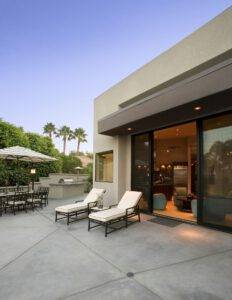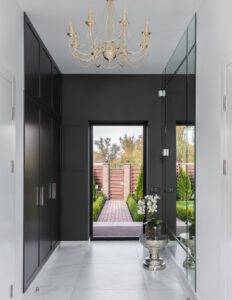Step into Your Dream Home!
We provide a comprehensive range of home remodeling services, from basic room updates to complete home transformations.
Request a FREE ESTIMATE
We Will Contact You
Enter your information

5/5
Read BBB Reviews

5/5
Read Nextdoor Reviews

5/5
Read Yelp Reviews
Meet All Your Home Remodeling Requirements Quickly and with Ease
Home Remodeling Services in West Hills
Welcome to ACD Builders, where your dream home becomes a reality. As the leading experts in home remodeling in West Hills, we pride ourselves on transforming spaces and elevating lifestyles. With a keen eye for design and a passion for perfection, we’ve been redefining the essence of homes in our community.
What We Offer
At ACD Builders, our services go beyond mere construction. We offer:
- Comprehensive Consultation: Understand the potential of your space with our experts.
- Custom Design: Tailored solutions that resonate with your personal style.
- Quality Construction: Using the best materials and techniques for lasting results.
From kitchens to living rooms, bathrooms to bedrooms, our home remodeling expertise ensures every corner of your home reflects elegance and functionality.
Why Choose ACD Builders West Hills?
- Experience: Years of hands-on experience in transforming homes in West Hills.
- Expertise: A team of dedicated professionals who understand the nuances of home remodeling.
- End-to-End Solutions: From conceptualization to completion, we handle it all.
- Client-Centric Approach: Your vision is our mission. We ensure our designs align with your desires.
Boost Your Home’s Value with Home Remodeling
Investing in home remodeling is more than just a visual upgrade; it’s a smart financial decision. Here’s how:
- Increased Market Value: A well-remodeled home can significantly boost its market price.
- Enhanced Functionality: Modern designs ensure optimal utilization of space, adding to the home’s utility.
- Energy Efficiency: New designs often incorporate energy-saving solutions, reducing your utility bills.
- Aesthetic Appeal: A beautiful home is a joy forever. Remodeling ensures your home remains a contemporary masterpiece.
In the realm of home remodeling in West Hills, ACD Builders stands unparalleled. Our commitment to excellence, coupled with our unmatched skills, makes us the preferred choice for homeowners looking for a transformative experience.
Ready to embark on a journey of transformation? Trust ACD Builders West Hills to lead the way. Contact us today and let’s craft the home of your dreams!
FAQs
The most expensive part of a home remodel can vary based on the scope of the project, the materials chosen, and regional labor costs. However, some of the most commonly expensive parts of a home remodel include:
Kitchens: Kitchen remodels can be among the most expensive due to the complexity of the work and the cost of materials. This includes cabinetry, countertops, high-end appliances, plumbing, electrical work, and flooring.
Bathrooms: Bathroom renovations can also be costly, especially if you’re relocating plumbing fixtures or opting for luxury finishes and features like heated floors, custom tile work, or a steam shower.
Additions: Building an addition to a home, whether it’s an extra bedroom, bathroom, or extending a living area, can be expensive because it’s essentially like building a new structure. This involves foundation work, roofing, walls, insulation, electrical, and often plumbing.
Foundation Repair: If there are issues with a home’s foundation, addressing them can be very costly. This might involve underpinning, piering, or even lifting the house.
Roof Replacement: Depending on the materials used (e.g., asphalt shingles vs. slate or metal), replacing a roof can be a significant expense.
HVAC Systems: Replacing or upgrading heating, ventilation, and air conditioning systems can also be a major cost, especially if you’re changing the type of system or need to modify ductwork.
Windows and Doors: Replacing old windows and doors with energy-efficient ones, especially custom sizes or high-quality materials, can add up.
Structural Changes: Removing load-bearing walls, adding new entries, or making other structural alterations can be complex and costly due to the need for engineering and ensuring the home remains stable.
It’s essential to note that while some parts of a remodel might be more expensive initially, they can offer a good return on investment (ROI) in the long run, either through energy savings, increased home value, or enhanced livability and enjoyment of the space.
The duration of a home remodel can vary widely based on the scope of the project, the size of the home, the complexity of the changes, and other factors such as permitting, weather conditions (for exterior work), and unforeseen challenges that arise during construction. Here’s a general overview of how long different types of remodeling projects might take:
Small Bathroom Remodel: 2-3 weeks
- This assumes standard changes like replacing fixtures, tiling, and painting.
Full Bathroom Remodel: 4-6 weeks
- This includes relocating plumbing, changing the layout, or adding new features like a steam shower.
Small Kitchen Remodel: 4-6 weeks
- This might involve replacing countertops, adding a backsplash, and updating appliances.
Full Kitchen Remodel: 8-12 weeks
- This would involve changing the layout, moving plumbing or electrical systems, installing new cabinetry, and other major changes.
Bedroom or Living Room: 2-4 weeks
- This can involve painting, updating lighting, and possibly adding or removing walls.
Home Addition: 2-6 months
- Building a new room or extending an existing one involves foundation work, framing, roofing, and full interior finishing.
Basement or Attic Conversion: 6-12 weeks
- This involves turning an unfinished space into a livable area, which might include adding insulation, walls, flooring, electrical, and possibly plumbing.
Whole House Remodel: 4-12 months
- This involves extensive changes throughout the home and might be done while the homeowners live elsewhere.
Exterior Projects (e.g., siding, roofing, windows): 1-4 weeks
- The timeline can be affected by the size of the home and weather conditions.
Landscaping Projects: 1-4 weeks
- This can vary based on the complexity of the project.
It’s important to note that these are general estimates, and the actual duration can vary based on the contractor’s availability, the efficiency of the crew, the timely delivery of materials, and other factors. Additionally, unforeseen issues such as structural problems, mold, or outdated electrical/plumbing can add to the timeline. It’s always a good idea to build in some buffer time when planning a remodel.
When undertaking a home remodeling project, having the right forms and documentation in place is crucial for ensuring clear communication, setting expectations, and protecting both the homeowner and the contractor. Here are some of the best forms to consider for a home remodeling project:
Contract Agreement: This is the primary document that outlines the scope of work, payment terms, project timeline, materials to be used, and other specifics of the project. It should be detailed and clear to avoid any misunderstandings.
Change Order Form: During the course of a remodel, changes to the original plan might be necessary or desired. A change order form documents any changes to the original contract, including adjustments to the cost and timeline.
Permit Applications: Depending on the nature and extent of the remodel, various permits might be required (e.g., building, electrical, plumbing). These forms are typically obtained from and submitted to local government or regulatory bodies.
Lien Waivers: These are used to confirm that subcontractors and suppliers have been paid and waive their right to place a lien on the property. They’re crucial for protecting homeowners from potential financial disputes.
Payment Schedule: This form outlines the payment milestones for the project. It might specify down payments, progress payments, and the final payment upon completion.
Project Timeline/Schedule: This form provides a detailed breakdown of the project’s phases and expected completion dates for each phase.
Inspection Checklist: This is used to ensure that all aspects of the remodel meet the agreed-upon standards and any local building codes.
Material List: This form lists all the materials that will be used in the project, including quantities, brands, colors, and other specifications.
Subcontractor Agreement: If the primary contractor is hiring subcontractors for specific parts of the project (e.g., electrical, plumbing), this form outlines the subcontractor’s responsibilities, payment terms, and other details.
Warranty Information: If the contractor offers warranties on their work or if certain materials have manufacturer warranties, these documents should be provided to the homeowner.
Insurance Proof: Contractors should provide proof of insurance, ensuring they have coverage for potential damages or injuries that might occur during the project.
Walk-through Checklist: Before the final payment and project completion, the contractor and homeowner can use this form to inspect the finished work, note any issues that need addressing, and confirm that the project meets the agreed-upon standards.
Feedback and Review Form: After the project’s completion, contractors might provide this form to homeowners to gather feedback on the work and the overall experience.
Before starting any remodeling project, homeowners should consult with legal professionals or experts familiar with local regulations to ensure all necessary forms are in place and that they provide adequate protection and clarity for all parties involved.
Home layouts, also known as floor plans, have evolved over the years to cater to changing family needs, lifestyles, and architectural trends. While the popularity of specific home layouts can vary by region and culture, the following are five of the most common and sought-after home layouts:
Open Floor Plan:
- Description: This layout features large, open spaces that combine multiple rooms into one. For instance, the kitchen, dining room, and living room might flow seamlessly into one another without full dividing walls.
- Popularity Reason: It promotes social interaction, makes spaces feel larger, and allows for more natural light.
Split-Level (or Tri-Level):
- Description: Split-level homes have staggered floor levels, typically with two short sets of stairs, one going up and the other going down from the main entrance level.
- Popularity Reason: It effectively separates living and sleeping spaces, making it ideal for families. It also utilizes land on sloping lots efficiently.
Ranch (or Rambler):
- Description: Ranch homes are typically one-story houses with a long, low profile. They often have an L or U shape and may feature an attached garage.
- Popularity Reason: Their single-story design makes them accessible, which is especially appealing to those who prefer to avoid stairs, such as seniors or families with young children.
Colonial:
- Description: This layout is characterized by its symmetrical design, square or rectangular shape, and centrally located front door. Inside, rooms are often arranged symmetrically on either side of a central hallway, with the kitchen and family spaces at the back.
- Popularity Reason: It offers a timeless, classic aesthetic and clearly defined rooms, which some homeowners prefer over open-concept designs.
Cape Cod:
- Description: Inspired by early colonial homes, Cape Cod houses are typically one or one-and-a-half stories with steeply pitched roofs, symmetrical facades, and dormer windows.
- Popularity Reason: Their compact design is efficient and charming, making them popular in many suburban neighborhoods, especially in the northeastern U.S.
While these are some of the top home layouts, many variations and hybrids exist. The best layout often depends on individual preferences, the size and shape of the lot, regional architectural trends, and lifestyle needs.
The most functional home layout largely depends on the specific needs and preferences of the homeowner. However, in terms of versatility, adaptability, and fostering social interaction, the Open Floor Plan is often considered the most functional for a broad range of homeowners. Here’s why:
Versatility: Open floor plans allow homeowners to easily reconfigure spaces. For instance, as family needs change, a dining area can be expanded or contracted, or the living space can be rearranged without being constrained by walls.
Social Interaction: With fewer walls separating common areas, family members and guests can easily interact, making it ideal for socializing. Whether someone is cooking in the kitchen or relaxing in the living area, conversations can flow freely.
Natural Light: Without walls blocking windows, natural light can permeate the space more effectively, creating a brighter and more inviting environment.
Perception of Space: Open floor plans can make a home feel larger than it is. Without walls breaking up the line of sight, spaces feel more expansive.
Adaptability: As trends change, open floor plans are easier to update. For instance, changing the design theme or updating furniture is straightforward when you’re not working around fixed and compartmentalized spaces.
Safety: For families with young children, open floor plans allow parents to keep an eye on their kids while they’re engaged in other activities, like cooking.
Resale Value: Many homebuyers currently prefer open floor plans, so homes with this layout might have a competitive edge in the market.
However, it’s essential to note that while open floor plans offer many advantages, they might not be the most functional for everyone. Some people prefer more traditional layouts with distinct rooms for specific purposes, valuing privacy and separation over openness. Additionally, open floor plans can sometimes pose challenges in terms of heating, cooling, and sound control.
Ultimately, the most functional home layout is one that aligns with the homeowner’s lifestyle, preferences, and the specific needs of their household.
Why Us
1. Unmatched Expertise
Craftsmanship and innovation stand as the pillars of our approach, backed by industry knowledge that ensures your dreams are realized brick by brick in West Hills, California.
2. Timely Deliveries
Every project, big or small, is delivered on schedule, meeting the highest standards of quality, thanks to our dedicated team of specialists.
3. Beyond Brick and Mortar
We believe in building lasting relationships grounded in honesty and trust, going beyond just constructing physical structures.
4. Continuous Support
Our commitment to you extends beyond project completion, offering steadfast support for any future needs.
5. Affordable Excellence
Experience premium construction solutions that are budget-friendly, without compromising on quality and craftsmanship.
Discover the ACD Builders Difference
Join hands with a team where your vision takes center stage, shaping a future in West Hills that is crafted to perfection. Moreover, we never end our relationship with our clients once the deal is over. Feel free to contact us even after the project is over for anything you need.

100% Client Satisfaction

Professional Work and Team











